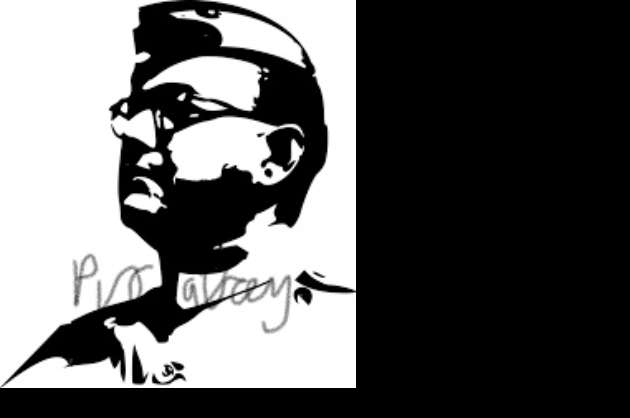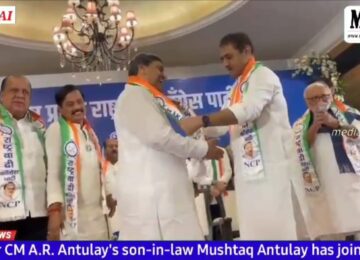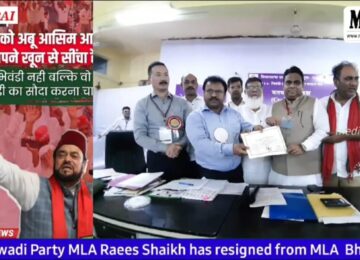Anupama Nair
Indian National Army (INA), was an armed force formed by Indian collaborationists and Imperial Japan on 1 September 1942 in Southeast Asia during Second World War. Its aim was to secure Independence of India from the British rule. It fought alongside Japanese soldiers in the latter's campaign in the “Southeast Asian theatre of WWII”. The army was first formed in 1942 by Rash Behari Bose, by Indian Prisoners of Wars of the British-Indian Army captured by Japan in the Malayan campaign and at Singapore. The first INA unfortunately was disbanded in December 1942, after differences between the INA leadership and the Japanese military over its role in Japan's war in Asia. Rash Behari Bose then handed over INA to Netaji Subhas Chandra Bose. It was revived under the leadership of Subhas Chandra Bose after his arrival in Southeast Asia in 1943. The army was declared to be the army of Bose's Arzi Hukumat-e-Azad Hind or the Provisional Government of Free India.
Netaji Subhas Chandra Bose named the brigades and regiments of INA after Gandhi, Nehru, Maulana Azad, and himself. There was also an all-women regiment named after Rani of Jhansi, Lakshmi Bai. Under Bose's leadership, the INA drew ex-prisoners and thousands of civilian volunteers from the Indian expatriate population in Malaya i.e., present-day Malaysia and Burma. This second INA fought along with the Imperial Japanese Army against the British and Commonwealth forces in the campaigns in Burma at Imphal and Kohima, and later against the Allied powers, capturing Burma.
Following the outbreak of Second World War, Japan invaded South East Asia. At the time 70,000 troops were stationed in the region, most of them along the Malayan coast. Japan conducted a lightning campaign which culminated in the fall of the Malayan peninsula and Singapore in 1942. It is said, in the Singapore campaign alone, 45,000 Indian prisoners of war were captured. It was from these prisoners of war that the Japanese decided to create an auxiliary army which would later fight against the British.
The first INA was first formed under Mohan Singh, a former officer of the British Indian Army captured during the Malayan campaign. The poor conditions in camps where prisoners of war were kept, as well as resentment against the British in general, saw many prisoners of war volunteer to join the Indian National Army
The initiative received considerable support from the Imperial Japanese Army and from the ethnic Indian population of South-East Asia. However, disagreements between Mohan Singh and Japanese Army Command regarding the autonomy of the Indian National Army led to the disbandment of the first INA in December 1942.
Although Mohan Singh had angered the Japanese Army Command through his actions, they relented to form a second Indian National Army. Mohan Singh himself recommended Subash Chandra Bose for the leadership role. His reputation as a committed nationalist was known to both the Indian diaspora of South East Asia and the Imperial Japanese Army. As such, they were more open to the idea of a nationalist army led by Subash Chandra Bose. The activities of Subash Chandra Bose in India had forced the British authorities to imprison him, but he escaped and reached Berlin in 1941.
Although the German leadership were sympathetic to his cause, logistic problems prevented them from granting any support to his quest for raising an army to fight the British. However, the Japanese were ready to support him and upon their personal invitation, Subash Chandra Bose arrived in Singapore in July 1943 to take command of what would be known as the second Indian National Army, or the Azad Hind Fauj.
After Subash Chandra Bose took command of the Azad Hind Fauj, there was an increase of volunteers looking to join the INA. Although Subash Chandra Bose agreed for the INA to remain subordinate to the Japanese Army, he saw it as a necessary “sacrifice towards the fulfilment of the ultimate goal of freeing India from the British Empire”. The Azad Hind Fauj participated in operation U-Go, the 1944 Japanese campaign towards British India. Although the INA saw initial success during the early phases of the operation, they were forced to withdraw during the battle of Imphal and battle of Kohima that was fought on April 4th, 1944, and the Japanese Army was defeated by British. The INA lost a lot of lives and property. A number of units were disbanded or used to fee into new divisions of the now declining Japanese Army
The Rani of Jhansi Regiment was the women's regiment of the Indian National Army. It was one of the all-female combat regiments of the Second World War on all sides. Led by Captain Lakshmi Swaminathan later known as Lakshmi Sahgal the unit was raised in July 1943 with volunteers from the expatriate Indian population in Southeast Asia. The unit was named the "Rani Jhansi Regiment" after Rani Lakshmi Bai, the Queen of Jhansi, a renowned Indian queen and freedom fighter. Bose announced the formation of the Regiment on 12 July 1943. Most of the women were teenage volunteers of Indian descent from Malayan rubber estates and very few had ever been to India. The initial nucleus of the force was established with its training camp in Singapore with approximately a hundred and seventy cadets. The cadets were given ranks of non-commissioned officer according to their education. Later, camps were established in Rangoon and Bangkok and by November 1943, the unit had more than three hundred cadets.
After the fall of Rangoon and the withdrawal of the Azad Hind government and Subhas Chandra Bose from the city and through Burma, the troops originally from Burma were allowed to disband, while the remainder of the regiment retreated along with the retreating Japanese forces on foot and, when available, on mechanized transport. During the retreat, it suffered some attacks both from Allied air attacks, as well as from the Burmese resistance forces. The total number of casualties suffered is not known. The unit later disbanded.
The army under Netaji, fought for the Independence of India..




























